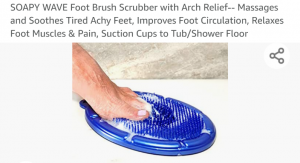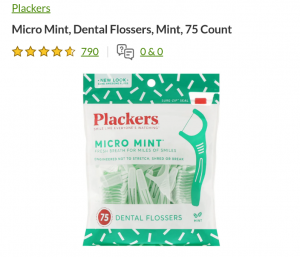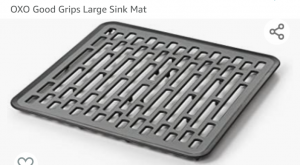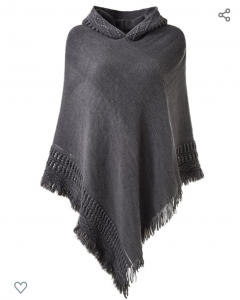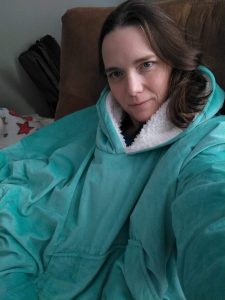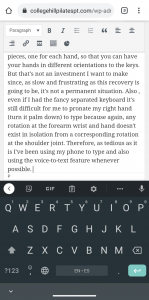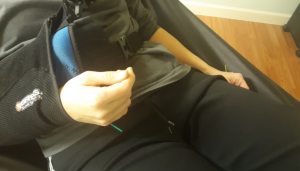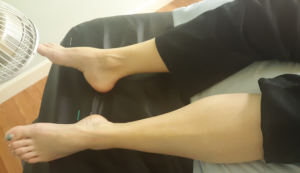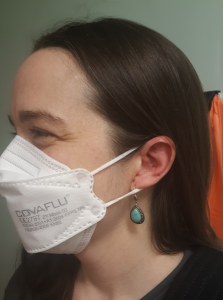I haven’t updated the blog in a while for the simple reason that I just didn’t feel like I had anything very interesting to share. It’s been almost 7 weeks since I dislocated my shoulder and a little over 4 weeks since the surgery to repair my shoulder labrum and fill in the Hill-Sachs lesion (aka the dent left in my humerus from it being smashed into my scapula). I’ve been going to PT once a week and doing my PT exercises religiously (maybe manicly?) 3 times a day. The exercises are still mostly focused on restoring range of motion with a couple thrown in for preventing my shoulder muscles from completely atrophying. I’ll post my exercise program for you further down. I’ve met my range of motion goals for week 4. I have 2 more weeks until I’m free of the sling. All is on track. Nothing exciting to report.
I started back to work seeing a few patients and Pilates clients this week to try to ease back into normalcy. As I told a patient about not posting for a while because there’s nothing interesting to say he reminded me that the long, slow, unexciting pace of recovery is something that could actually be really important to post about. He was absolutely right! The chunks of time that seem to go on forever in between the big achievements and exciting realizations of recovery are where it gets hard. These lulls are where people tend to give up and stop doing their home exercises or drop out of physical therapy. But these are the times where perseverance is everything. You have to keep pushing on that long, slow uphill climb to get to the mountain tops where you can celebrate the bigger victories.
On the mental health front, unsurprisingly, I’ve also been pretty depressed the past couple weeks slogging through this process. Not being able to see patients/clients really brings me down. I’m thankful to be ramping my practice back up now. It’s not wasted on me how blessed I am that I have the type of job where I still get to see people face-to-face even in the midst of the pandemic.
On top of that I’m still not sleeping very well. I have to sleep in the sling and still can’t sleep lying in bed so I’m using a recliner. My shoulder gets really achey and stiff and wakes me up at about 3 or 4 am. When you don’t sleep well everything seems worse. Studies show that your pain tolerance is actually lower when you aren’t getting enough sleep. What a cruel joke! You can’t sleep because you have pain, but you can’t tolerate the pain well because you can’t sleep.
Also, if we’re going to be real here, as I’ve been walking to and from my office like I usually did daily before this injury, I’ve realized that I have a fear of walking on the sidewalk. I have to keep my eyes down on it in case one of those evil sidewalk cracks tries to grab my foot again. I keep remembering the sidewalk flying up at me and the feeling of my shoulder coming out as my hand hit the ground. Sometimes I walk in the street just to avoid being on the sidewalk (only on the empty side streets of course). I’m hoping walking regularly to and from the office, just doing it anyway, will eventually help me get over that.
And now for your excited viewing pleasure I have some photos of my current home exercise program, which I do 3 times a day without fail.
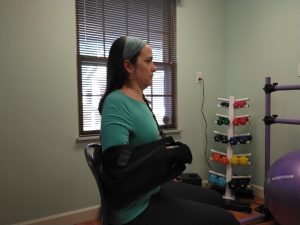
Cervical retraction to help with alignment and to counteract the effects of wearing a sling all the time.
Wand shoulder internal and external rotation – I’m using the dowel to let my unaffected hand and arm push my surgical shoulder into internal and external rotation. The motion you see here is all I have right now, it doesn’t go any farther in or out even though I’m pushing on it. I might not ever get full range of motion back in these directions. Studies show most people in my position don’t. But that’s okay. Since I’m not trying to be a baseball pitcher or anything I will get enough motion to be functional.
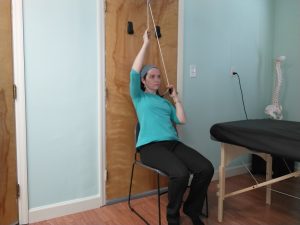
Bicep curls help keep my bicep from atrophying as much while I’m not using it as much as I would normally use it because my arm is in the sling. I’m using a 3 lb weight in this video. I’m thankful that there was no damage from the dislocation to my bicep tendon as it comes up over my humerus. If there had been damage there I would have to avoid activation of my biceps so I wouldn’t be able to do this yet.
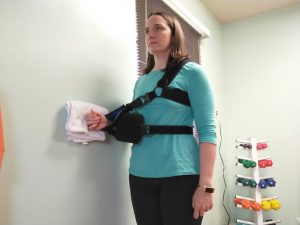
In addition to all of this I’m also still using ice a few times a day and at night. I’m massaging the incisions with Mederma and using my microcurrent point stimulators, which are great at preventing and treating scar tissue, on them. I’m seeing my acupuncturist weekly, which helps a lot with pain control, anxiety, and I get my best night of sleep all week the day I see her. My rhomboids (muscles between my shoulder blade and spine) have been painful and tight so she did some cupping on them, which helped a lot. This brings me to my last point for today…
I’ve realized how lucky I am to personally know so many great health care providers. I knew a great orthopedic surgeon when I needed one, a great PT, a great acupuncturist… And I have great massage therapists and chiropractors and others that I know I can call on if (when) I’m ready and I need them. I can’t imagine going through all of this and not knowing who to see or not having that level of trust with my people. What a privilege it is for me to be the person that my patients and clients trust when they are in the midst of the long, slow climb to recovery.
